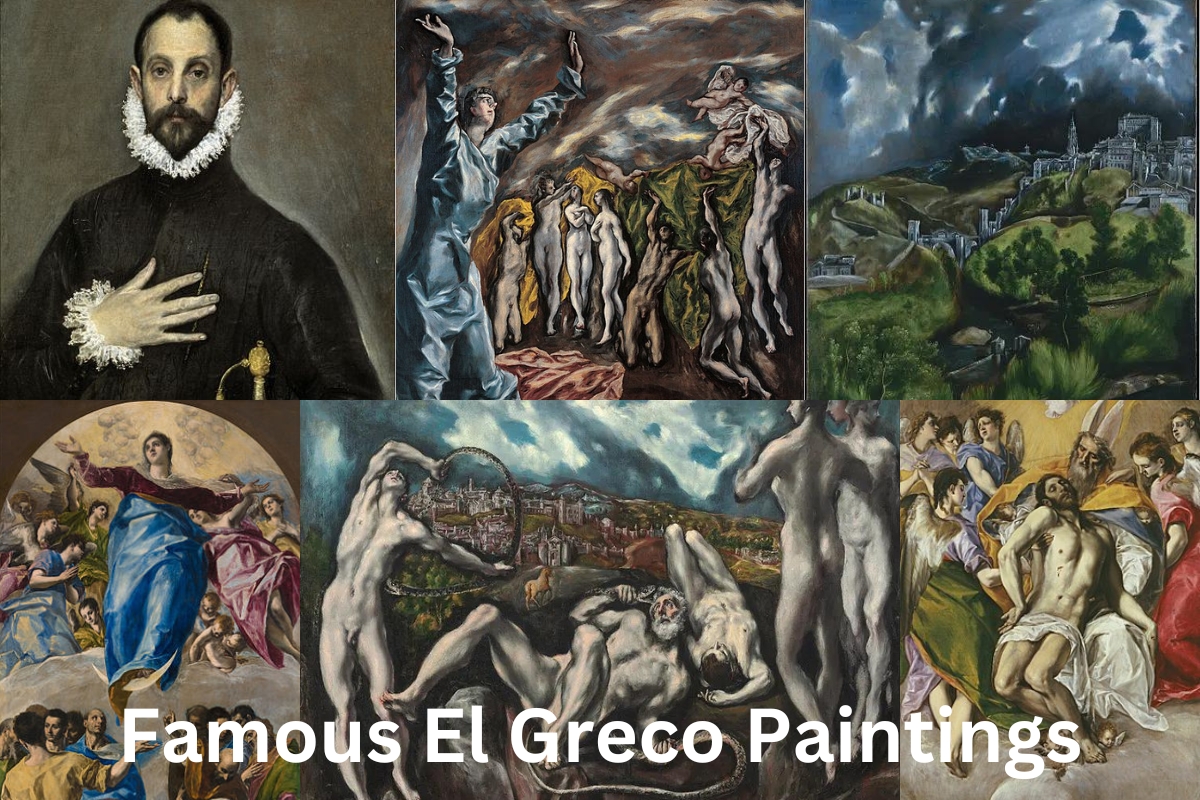The Greek-born artist, sculptor, and architect Domnikos Theotokópoulos (1 October 1541 – 7 April 1614), more commonly known as El Greco (“The Greek”), was a major figure of the Spanish Renaissance.
The artist’s entire birth name in Greek characters was Domnikos Theotokópoulos; he often appended the prefix K (Krs), which designates Cretan, to his signature.
The Republic of Venice in Italy, where El Greco was born, was the center of Post-Byzantine art at the time.
Like countless Greek painters before him, he studied and became a master of that tradition before making the journey to Venice at the age of 26. He moved to Rome in 1570 and set up a studio there, where he produced several works of art.
El Greco, when living in Italy, adapted aspects of the Mannerism and Venetian Renaissance styles popular at the time from the works of several prominent artists, most notably Tintoretto.
In 1577, he moved to Toledo, Spain, and remained there until his passing. The city of Toledo was where El Greco received many of his largest commissions, and it is also where he painted some of his most well-known works, such as View of Toledo and Opening of the Fifth Seal.
Also Read: Greek Artists
The dramatic and expressionist style of El Greco initially baffled his contemporaries, but ultimately won art critics over in the twentieth century.
Authors and poets like Rainer Maria Rilke and Nikos Kazantzakis were moved by El Greco’s life and art, and he is sometimes credited as a precursor to Expressionism and Cubism.
According to today’s scholars, El Greco is so singular that he cannot be placed in any one artistic lineage.
Famous for fusing Byzantine and Western painting styles, his figures are often distorted and stretched out to absurd lengths.
El Greco Famous Paintings
1. View of Toledo
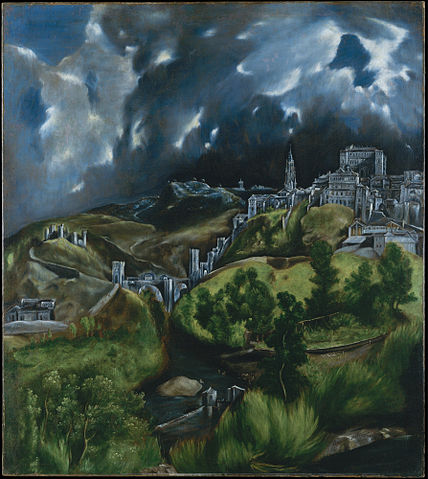
There are two landscapes by El Greco that have survived to the present day; the other is View and Plan of Toledo, also known as Vista de Toledo. The Metropolitan Museum of Art in New York is home to a painting titled View of Toledo.
Along with Vincent van Gogh’s The Starry Night and J. M. W. Turner and Claude Monet’s landscapes, View of Toledo is one of the most well-known images of the sky in Western art.
View of Toledo is one of the most ambitious works by the artist and is widely considered a landmark of Western art history.
Rarely do you see landscapes in Spanish Renaissance or Baroque paintings. Some have hypothesized that View of Toledo is a fragment of a much bigger work because landscape paintings are so uncommon.
There has, however, been no credible evidence or confirmation either way. Due to the ban on landscape painting imposed by the Council of Trent, this piece has been argued to be the earliest example of Spanish landscape painting.
2. The Burial of the Count of Orgaz
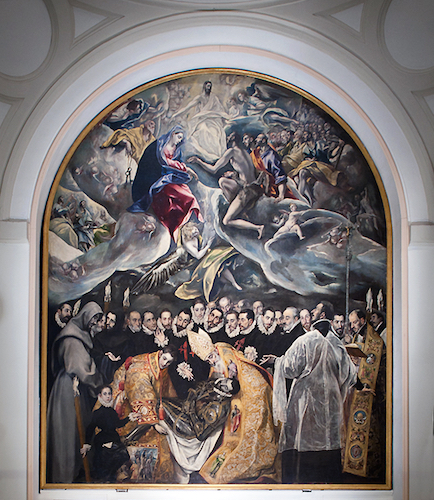
El Greco is well known for his 1586 work The Burial of the Count of Orgaz (Spanish: El Entierro del Conde de Orgaz).
It depicts a well-known urban legend from his time period and is widely regarded as one of his finest works. It’s a huge picture that’s roughly divided in half, with one half depicting the heavens and the other depicting Earth, however the two halves work together compositionally so that there’s little sense of division.
Art historians have hailed the work, calling it everything from “one of the most accurate pages in the history of Spain” to “the epitome of Greco’s artistic style” and calling it a masterpiece of Western art and of late Mannerist painting.
3. The Disrobing of Christ
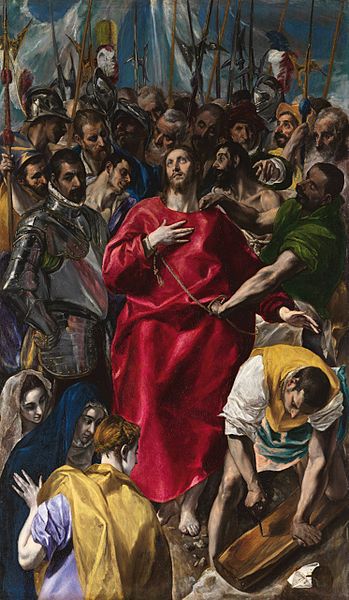
El Greco’s The Disrobing of Christ, also known as El Expolio, is a painting he began in the summer of 1577 and finished the following spring for the High Altar in the sacristy of the Cathedral of Toledo, where it is still typically shown today.
After undergoing cleaning and restoration in the Prado in Madrid (together with the other El Grecos), it was temporarily displayed there in late 2013 before being sent back to Toledo the following year.
It is widely recognized as one of El Greco’s best. The first evidence of El Greco’s time spent in Spain is a reference to this work in a document dated July 2, 1577.
Luis de Castilla, son of the dean of the Cathedral of Toledo, Diego de Castilla, was a friend of El Greco’s from their time spent together in Rome, and this friendship ultimately led to the commission for the painting.
El Greco’s other important commission, the paintings for the Toledan church of Santo Domingo el Antiguo, were organised by De Castilla senior, on which he worked simultaneously.
4. Laocoön
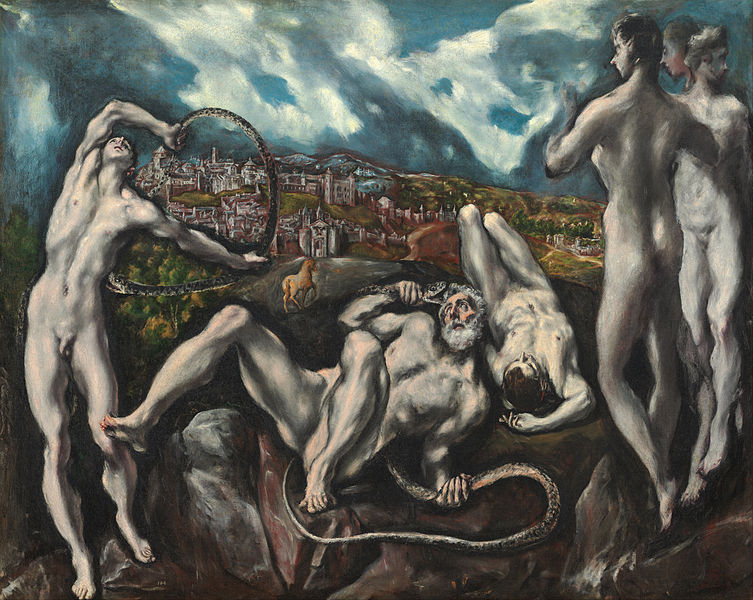
El Greco completed The Laocoön in 1610. The National Gallery of Art in Washington, DC, has it in their collection.
The mythological deaths of Laocoön and his two sons, Antiphantes and Thymbraeus, from the perspective of Greek and Roman mythology are depicted in the picture.
A punishment from the gods, Laocoön and his sons were strangled by sea serpents after Laocoön tried to warn his compatriots about the Trojan horse.
Laocoön is a creation of Mannerism, an Italian artistic movement that emerged in the 16th century as a reaction to the ideals of the Renaissance and was inspired by the recently found monumental Hellenistic sculpture Laocoön and His Sons in Rome.
El Greco’s painting, with its intense emotional atmosphere and deformed figures, is an intentional departure from the equilibrium and harmony of Renaissance art.
5. Opening of the Fifth Seal
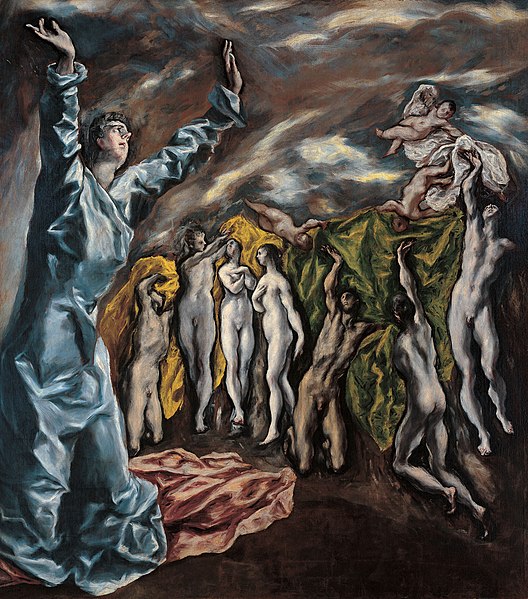
El Greco painted The Opening of the Fifth Seal (also known as The Fifth Seal of the Apocalypse or The Vision of Saint John) in his final years for a side-altar at the chapel of Saint John the Baptist beyond the walls of Toledo.
El Greco’s picture was known as Profane Love before 1908. Scholar Manuel B. Cossio raised reservations about the title and proposed The Opening of the Fifth Seal as a better fit.
The painting depicts the martyrs’ souls pleading with God for vengeance against their earthly tormentors, as described in Revelation 6:9-11. St. John’s ecstasy fills the foreground of the painting, while behind him a tumult of naked souls writhes in a white mantle of salvation.
In 1880, the painting’s upper half was destroyed. It is speculated that the sacrifice goat releasing the Fifth Seal was represented in the missing section.
It’s possible that El Greco’s lost upper painting resembled his Concert of Angels. Some have speculated that the missing upper section represented holy love, while the lower section represented profane love.
6. The Nobleman with his Hand on his Chest
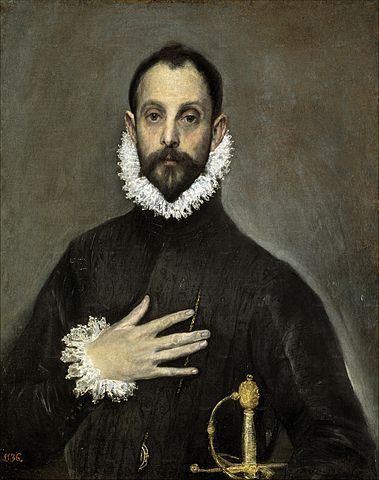
Oil on canvas by El Greco, titled variously The Nobleman with his Hand on his Chest, The Gentleman with His Hand at His Breast, and El caballero de la mano en el pecho (Spanish for “the knight with his hand in his chest”).
The most well-known of a series of secular portraits of unidentified gentlemen painted in Toledo around 1580 and now on display at the Museo del Prado, it features men clothed in black with white ruffs against dark backgrounds.
History scholars can’t agree on the man’s true identity.
7. Holy Trinity
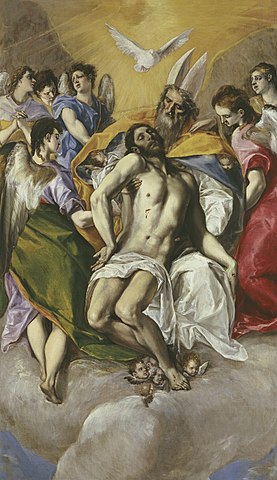
El Greco painted Holy Trinity, an oil on canvas, between 1577 and 1579 for the Abbey of Santo Domingo de Silos. It is one of nine works he created for the monastery.
It was purchased from sculptor Valeriano Salvatierra by King Ferdinand VII of Spain in 1832, and it is currently on display in the Prado Museum in Madrid.
A dove represents the Holy Spirit, who is depicted hovering above God the Father as he cradles the lifeless body of God the Son.
Michelangelo’s influence can be seen in the figures’ anatomical details, but Tintoretto’s chromaticism and Albrecht Dürer’s compositional strategies are also evident.
8. The Adoration of the Shepherds
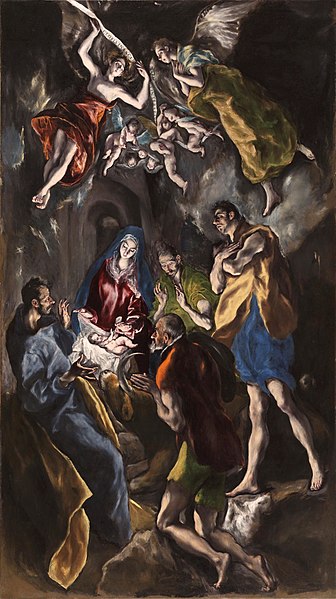
During the last year of his life, El Greco painted the classic subject of The Adoration of the Shepherds.
The artist created the painting to be displayed above his own tomb in the Santo Domingo el Antiguo convent in Toledo. In the bottom left, you can see his Greek signature.
Even though El Greco’s body was moved to another church after a short time, the painting stayed at Santo Domingo until the twentieth century. Now housed in the Museo del Prado, the museum claims the artwork is the artist’s final effort.
9. Saint Martin and the Beggar
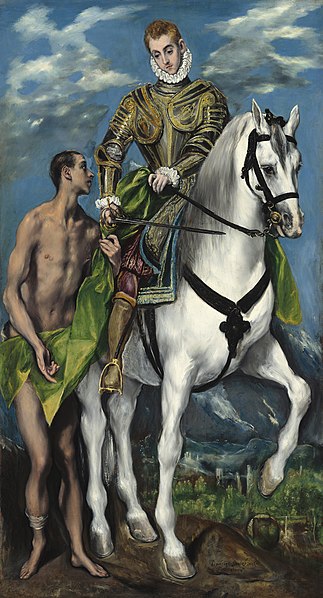
El Greco created Saint Martin and the Beggar in 1597–1499. It is now part of the permanent collection at The National Gallery of Art in Washington, DC.
Christian Saint Martin of Tours is portrayed as he is said to have done in legend: he parted with half of his cloak and handed it to a homeless man.
10. Assumption of the Virgin
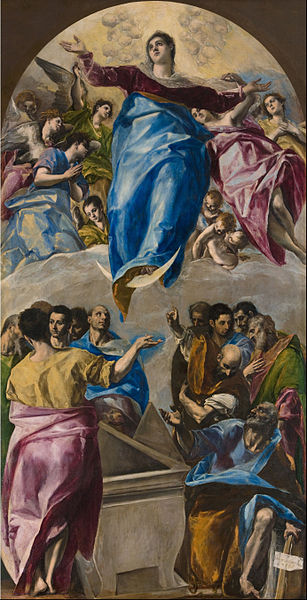
El Greco painted The Assumption of the Virgin in 1577–1579.
In the church of Santo Domingo el Antiguo in Toledo, Spain, the painting served as the focal point of the altarpiece. El Greco painted a total of nine works for this church, the first of which was this altarpiece.
Beginning his 37-year career in Toledo, El Greco painted The Assumption of the Virgin inspired by Michelangelo, painted in a naturalistic style with colossal figures and a Roman school palette.
El Greco’s composition for his Assumption of the Virgin is quite similar to Titian’s Assumption at the Basilica dei Frari in Venice, with the Virgin Mary and angels in the upper part of the painting and the apostles in the lower part.
The picture depicts the Virgin Mary floating upward, a sign of her holiness, while the apostles gather around her empty tomb, expressing shock and concern.

